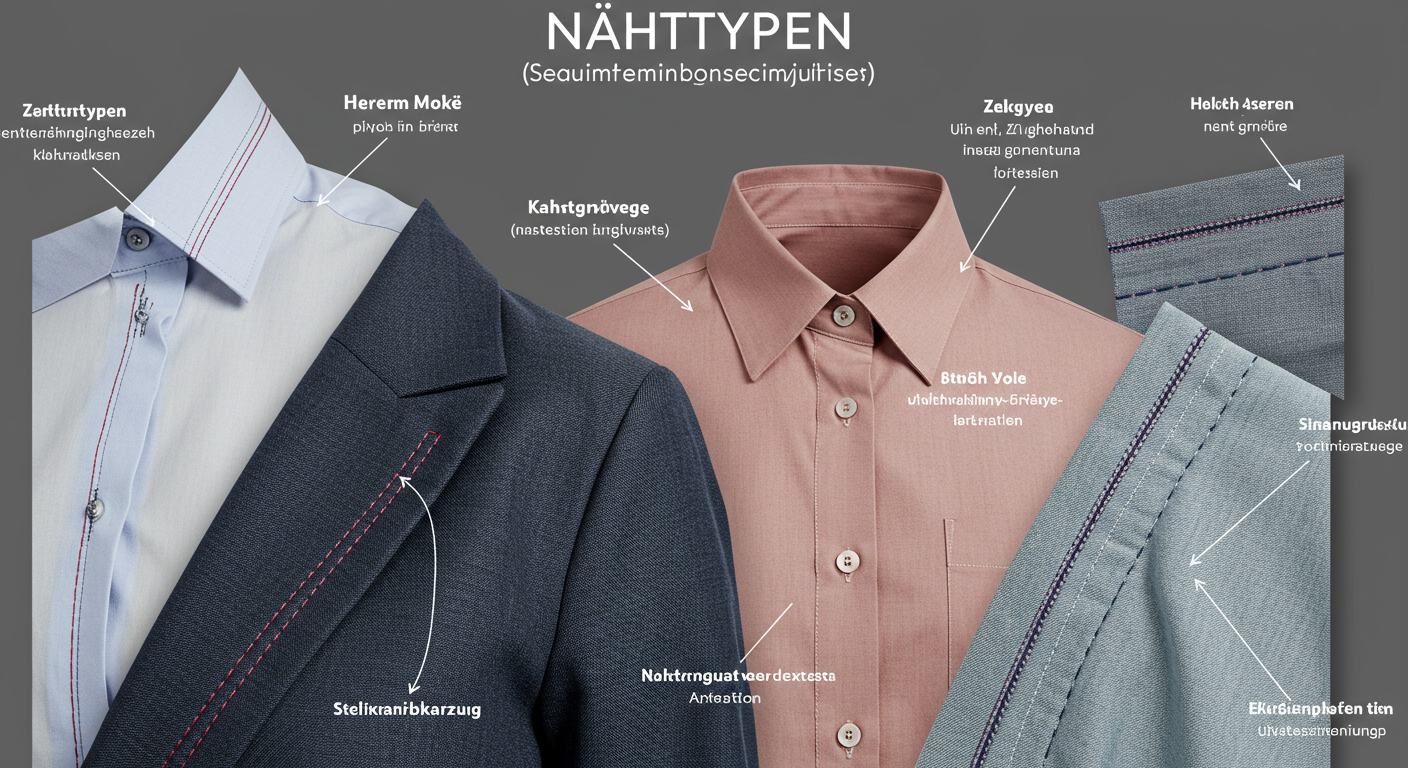Nahttypen: Mastering Different Types of Seams in Sewing

Sewing is an art, and like any great masterpiece, it requires a strong foundation. One of the most fundamental aspects of sewing is understanding *Nahttypen*, or seam types. Whether you’re a beginner threading your first needle or an experienced sewist tackling complex designs, knowing the various seams can elevate your projects significantly.
Each type of seam serves its unique purpose and adds character to your creations. From simple straight stitches to decorative finishes, mastering these techniques opens up endless possibilities in fabric manipulation. So let’s dive into the fascinating world of Nahttypen and discover how they can transform your sewing experience!
Understanding the Different Types of Seams
Seams are the backbone of any sewing project, and understanding their types can elevate your creations. Each seam serves a unique purpose, influencing not just aesthetics but also durability.
The plain seam is perhaps the most common. It’s simple yet versatile, perfect for everyday garments. For added strength, consider using a French seam. This type encloses raw edges and gives a polished finish.
If you’re working with stretch fabrics, opt for a zigzag or serged seam to allow flexibility without compromising structure. The flat-felled seam offers both strength and neatness, making it ideal for jeans or heavy-duty projects.
Decorative seams add flair while fulfilling functional needs. Topstitching enhances design elements while securing layers in place. Understanding these nuances empowers you to choose wisely based on fabric type and intended use. Explore each option to discover what works best for your vision!
How to Choose the Right Seam for Your Project
Choosing the right seam for your project can make all the difference in the final look and durability of your work. Start by considering the fabric you’re using. Lightweight fabrics often require delicate seams, while heavier materials need robust stitching.
Next, think about the purpose of your item. If it’s a garment that will undergo frequent wear, opt for a more durable seam like a French or flat-felled seam to ensure longevity. For decorative pieces or home decor projects, you might choose something visually appealing, such as a bias-bound seam.
Don’t forget to take into account any finishing techniques you’ll be using. Some seams lend themselves well to serging or zigzag stitches for added fray resistance. Always keep functionality and aesthetics in mind as you decide on the best fit for your specific sewing venture!
Step-by-Step Guide to Sewing Common Seams
Sewing seams can seem daunting at first, but with a clear approach, you’ll find it quite rewarding. Start by preparing your fabric. Ensure it’s clean and pressed for the best results.
Next, choose the right seam type based on your project needs. For example, a straight stitch works well for most garments, while a zigzag stitch is ideal for knits.
Align your fabric pieces carefully and pin them in place to prevent shifting. This step is crucial for accuracy.
As you sew, maintain an even seam allowance—typically around 1/4 to 5/8 inch depending on the pattern instructions. Keep your stitches consistent in length; this ensures durability and neatness.
Don’t forget to backstitch at both ends of your seams to secure them properly. After sewing, press each seam open or to one side as needed; pressing helps achieve crisp lines and enhances overall appearance.
Tips and Tricks for Perfect Seams
Achieving perfect seams is an art that requires practice and attention to detail. Start by choosing the right needle for your fabric type. A sharp needle works wonders for woven fabrics, while a ballpoint is ideal for knits.
Always use quality thread suited for your project. Polyester threads are versatile, while cotton threads add charm to natural fabrics.
Pressing seams as you sew can make a significant difference. Use steam to set the stitches and give them a polished look.
Don’t forget about seam allowances; they play a crucial role in ensuring sturdiness without compromising design.
Practice makes perfect! Experiment with different stitching techniques on scrap fabric before tackling your main project. Each attempt will bring you closer to mastering those impeccable seams.
Creative Ways to Use Different Seam Types in Your Sewing Projects
Get creative with your sewing projects by experimenting with different seam types. Try using a French seam for delicate fabrics like chiffon or silk. This not only provides a neat finish but also adds durability.
For denim, the flat-felled seam is an excellent choice. It gives strength while creating a professional look on jeans and jackets.
If you’re crafting bags or home decor items, consider using bias binding seams to add color and contrast. This technique can turn simple edges into stunning focal points.
Don’t forget about decorative stitching! Use zigzag seams on fleece blankets for added texture and warmth.
Layering various seam styles can create unique visual effects too. Mix straight stitches with serged edges for a modern twist that stands out in any project.
Conclusion: Embracing the Versatility of Nahttypen
Understanding and mastering Nahttypen can elevate your sewing projects to new heights. Each seam type has its unique characteristics, offering endless possibilities for creativity and functionality. Whether you’re aiming for strength in a sturdy piece or the delicate finish of a lightweight garment, choosing the right seam is essential.
Experimenting with different seams allows you to explore various textures and styles. From flat-felled seams that provide durability to French seams that create an elegant finish, there’s something for every project. The more familiar you become with each type of seam, the more confident you’ll feel in your abilities.
Embracing these versatile Nahttypen ensures not only quality craftsmanship but also a personal touch to all your creations. So gather your fabric and thread, unleash your imagination, and let the world of sewing unfold before you!




